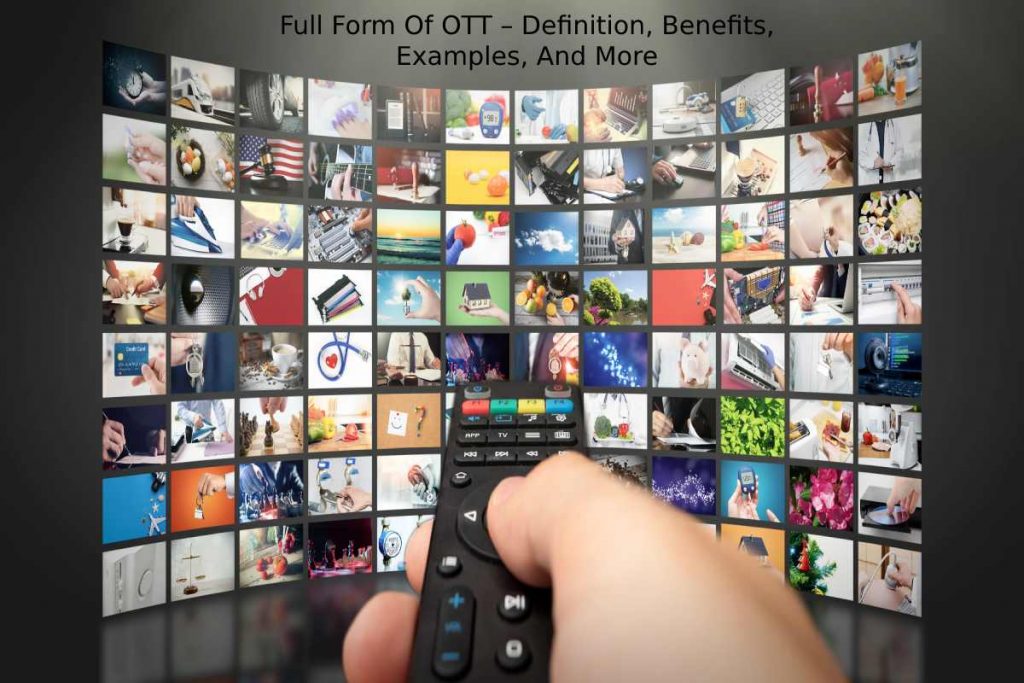The full form of OTT is Over-The-Top. This term relates to delivering different content, including movies and other television shows, over the Internet rather than through a traditional cable medium or broadcast provider.
In other words, or to put it simply, OTT stands for any internet streaming service of different shows. Together with entertainment content, the facility’s system is provided or made available “on” another platform to describe OTT.
Meaning And Definitions Of OTT
As already stated, OTT refers to any multimedia content streamed over the Internet. It includes subscription-based streaming services with which consumers can access content on-demand without having to contract with a traditional satellite or cable provider. Viewers can view OTT content on various devices, such as mobile phones, game consoles, and tablets, but most viewing takes place on connected televisions (CTVs).
The Most Significant Benefits Of OTT Platform
Complete solution: start, manage and monetize your OTT TV system.
- Firstly, it is Live TV (linear) and VoD support.
- Secondly, it is a cloud-based solution in your data center or hybrid.
- It has catchup TV and DVR options (recording linear content to enjoy when the user wants it).
- OTT has a management system with various functions: operator panel, billing, content management, customer management, DRM, statistics, and more.
- It has the full support of multiple playback platforms (Player), including mobile devices, smart TVs, and STBs.
- It has monetization through subscription, pay-per-view, and advertising models.
- White label solution that lets you operate under your brand.
Some OTT Examples
The term OTT primarily implies subscription-based video-on-demand (SVoD) services. SVoD allows the subscriber to watch the movie and other TV shows.
It also includes content related to soap operas or television series extracted from other producers and original content produced specifically for the OTT service. OTT services can be leveraged through televisions, desktops, laptops, and smartphones.
A distinct feature of OTT is that it works through a pre-existing Internet connection. For example, some of the most popular OTT platforms or services are Netflix, HBO, YouTube / YouTube Red, Amazon Prime, SlingTV, and Hulu.
OTT Offers Freedom Of Vision
OTT gives subscribers to this service the freedom to watch the shows they want or allows viewers to pay only for their entertainment content. It was designed to benefit the target audience directly.
OTT allows you to have complete control over programs and content. So you have complete freedom to choose the brand, theme, and user experience.
This benefit is not granted to the public in the traditional cable system, as they cannot be selective in their program choices. Cable offers many programs. It would help if you chose which one you want to see. But on OTT, viewers can only access selected shows.
Advantages Of OTT
On OTT platforms, you benefit from watching shows in different modes and not necessarily just on TV. Later, you can manage your favorite shows, even on the go.
Internet-based programs can be accessed via modes such as tablets and mobile phones. They also have the “App Switch” benefit, which allows them to control which shows or content they choose to buy and watch.
Conclusion
OTT is related to media services. The media in question provide their service directly to viewers via the Internet. It then bypasses cable, broadcast, and satellite TV platforms.
Usually, OTT platforms are companies or teams that act as controllers or distributors of that content. OTT bypasses a cable box to give the user direct access to TV programs or content.
